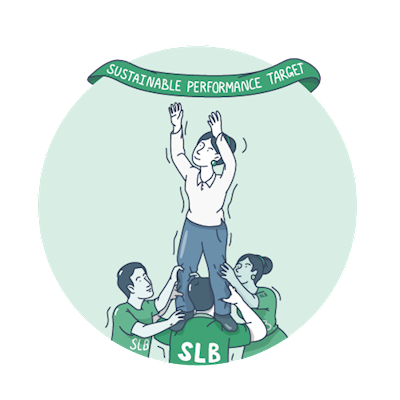You are using an outdated browser. Please upgrade your browser to improve your experience.
Article | 31 March 2022 | ESG

The growing investor focus on the transformation to a net-zero economy is being increasingly reflected in the bond market. Since the birth of the green bond segment in 2007, the global fixed income market has been playing a key role in financing the transition to a sustainable future. And now the global issuance of sustainable debt is on track to surpass $1 trillion this year, with green bonds dominating. A relatively new innovation, representing a small but fast-growing proportion of sustainable bond issuance, is sustainability-linked bonds (SLBs). This is where an issuer pledges to reach specific key performance indicators (KPIs) linked to sustainability performance targets, or could face higher coupon payments, for example.
In March Chile launched the world's first sovereign sustainability-linked bond, setting the stage for wider use of the instrument by governments. The bond adheres to the Paris Agreement on climate change and has a number of KPIs, including that the country emits no more than 95 metric tonne of carbon dioxide and equivalent by 2030, and that 60% of electricity production is derived from renewable energy by 2032.
And with many companies facing major challenges in the race to reach net zero emissions by 2050, SLB’s are being heralded as an innovative instrument for credible transition financing for industries, when traditional forms of sustainable finance don’t fit. Thereby allowing a greater range of organisations and sectors to get involved in the market. However, there is a catch. SLBs are largely unregulated, but usually adhere to voluntary principles published by the International Capital Market Association (ICMA) trade body. Those principles require targets to be ambitious, represent material improvement in underlying indicators, and go beyond business as usual. But some investors and experts say these loose guidelines present ‘greenwashing’ dangers.

We understand the importance of transforming companies into the sustainable companies of tomorrow. And we believe that SLBs are a very relevant tool in the contribution to the fight against climate change. But, for SLBs to become leading investment products in the sustainable bond space, measures are needed to prevent greenwashing and ensure clarity on how capital is allocated. The flexible nature of SLBs could make them prone to the risk of greenwashing. For instance, some issuances have been tied to KPIs that are clearly readily achievable.

Each month, we look at the steps Architas and the AXA Group are taking towards a better, more sustainable future for our employees, communities and the wider world.
This month we celebrated International Women’s Day, a global celebration of the social, economic, cultural and political achievements of women, and a call to action to accelerate the move towards gender parity in all walks of life. AXA strongly believes that gender parity is an opportunity to build teams with a broad diversity of thought, experience and skills, helping our company work better as a whole. And that is why the AXA Group has a target that by 2023, 50% of senior management roles will be held by women.

At Architas we specialise in multi-manager, multi-asset investing. We work with fund managers to ensure they are investing responsibly and focusing on environmental, social and governance (ESG) issues. In 2018, we began our journey to full ESG integration across all of our offers, and we aim to achieve this by the end of 2021. Since 2018 we have also been signatories of the United Nations Principles for Responsible Investment. For more information about our responsible investing process please click here.